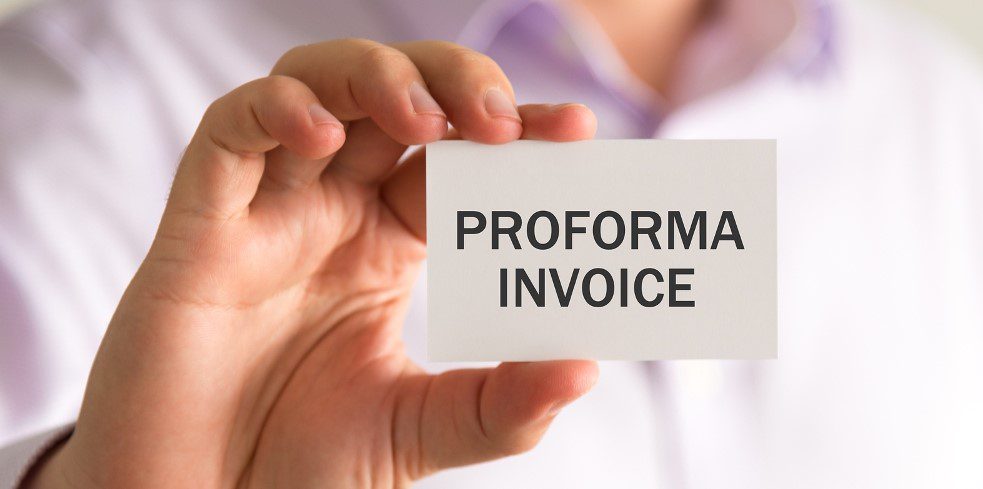What Exactly is a Proforma Invoice?
The term pro forma is Latin for “as a matter of form”. Its meaning varies depending on the purpose and field in which it is used. It can be applied to practices performed or documents issued as a pure formality, as well as those that are intended to satisfy minimum requirements, or to conform to a specific convention or doctrine.
A pro forma (or proforma) invoice is a comprehensive price quotation or offer to sell, presented in invoice format. It is typically used in product sales transactions where more information is required than is ordinarily included in a simple quote. The proforma invoice is often used in international transactions, where it is especially valuable.
Creating The Proforma Invoice
There is no required format for a proforma invoice, as it is not considered a “legal” document. The way the information is presented is left entirely to the company formulating the invoice (usually the exporter). Free sample proforma invoices can be found at www.trade.gov.
While no specific format is required, the document must be accurate, clear, concise, and include very specific information:
Invoice Header
- Title, which must read “Proforma Invoice” or “Pro Forma Invoice”
- Exporter’s name, address, telephone number and e-mail address
- Date issued (the date of the quotation)
- Proforma invoice reference number
Buyer’s Contact Information
- Importer’s name, address, telephone number and e-mail address
- Customer’s inquiry reference number or PO number, if one has been provided
Terms of payment (letter of credit, D/P or D/A, pre-payment, open account, etc.)
Exporter’s Banking Details
- Used for advising/negotiating L/C or SWIFT code details for wire transfer
Shipping Information
- Type of delivery and shipment (in one lot or partial lots and quantity of partial lots)
- Unit measure, weight, number of cases, pallets, boxes etc.
- Costs associated with freight (shipping and handling) and insurance that is included in the price
- Estimated date of shipment
Product Information
- List and quantity of products to be shipped
- Full product description including Harmonized System(HS) code, if available
- Unit pricing, quantity and total for the line item (Price x Quantity = Total)
- Country of origin (of the product to be shipped/sold)
Payment and Delivery Terms
- Currency (USD, Euro, Yen, etc.) and exchange rate to be used
- Terms of sale using Incoterms 2020 (FOB, CIF, CRF, etc.)
- Sales Tax
- Additional seller-provided services and their costs
- Cost of any additional documents, inspection, legalization, etc. to be borne by the importer or exporter
- Validity period/date
Exporter Signature and Corporate Title
Importer Signature and Title
- This indicates acceptance of the proforma invoice terms, either in the document itself or a cover letter. The signor must have corporate authority to approve the sale.
The Electronic Code of Federal Regulations, a database maintained by The Administrative Committee of the Federal Register and The National Archives, further identifies the requirements for international trade invoices.
Value of The Proforma Invoice
The proforma invoice is used to create a sale, not to generate payment for a sale (the commercial invoice is used for payment purposes). Therefore, the proforma invoice may go through a number of iterations before it becomes acceptable to both the importer and exporter. Once the final proforma invoice is accepted by the buyer, it should be signed by the authorized buyer/importer and returned to the exporter. The importer generally follows by submitting a Purchase Order.
Once a final proforma invoice is generated and accepted, it can assist the buyer in:
- The establishment of a letter of credit (L/C) through his bank;
- Obtaining import and foreign exchange permits from his local government;
- Seeking additional financing for the project;
- Fulfilling the requirements of his country’s import licensing procedures.
Exporters can also use the accepted proforma invoice to help them obtain a bank line of credit to cover the costs of manufacturing or purchasing the goods to be exported.
In some countries, including the United States, the Customs office may accept a proforma invoice, generated by the importer, to release the goods at entry to Customs when a commercial invoice is not available. It should be noted that U.S. Customs will require the importer to post a bond and produce the commercial invoice within 120 days of the date of entry, or within 50 days if the information is needed for statistical purposes.
As you can see, the proforma invoice is essential for exporters and importers. If you are already doing business internationally, or plan to start soon, it is critical that you understand the purposes of and requirements for this important document.
Check out these other credit management articles on our website.
